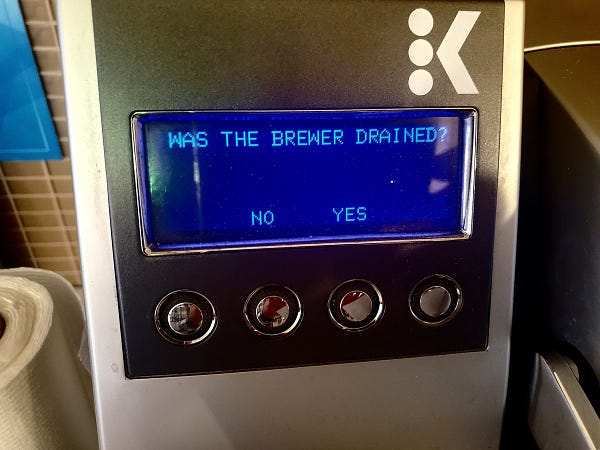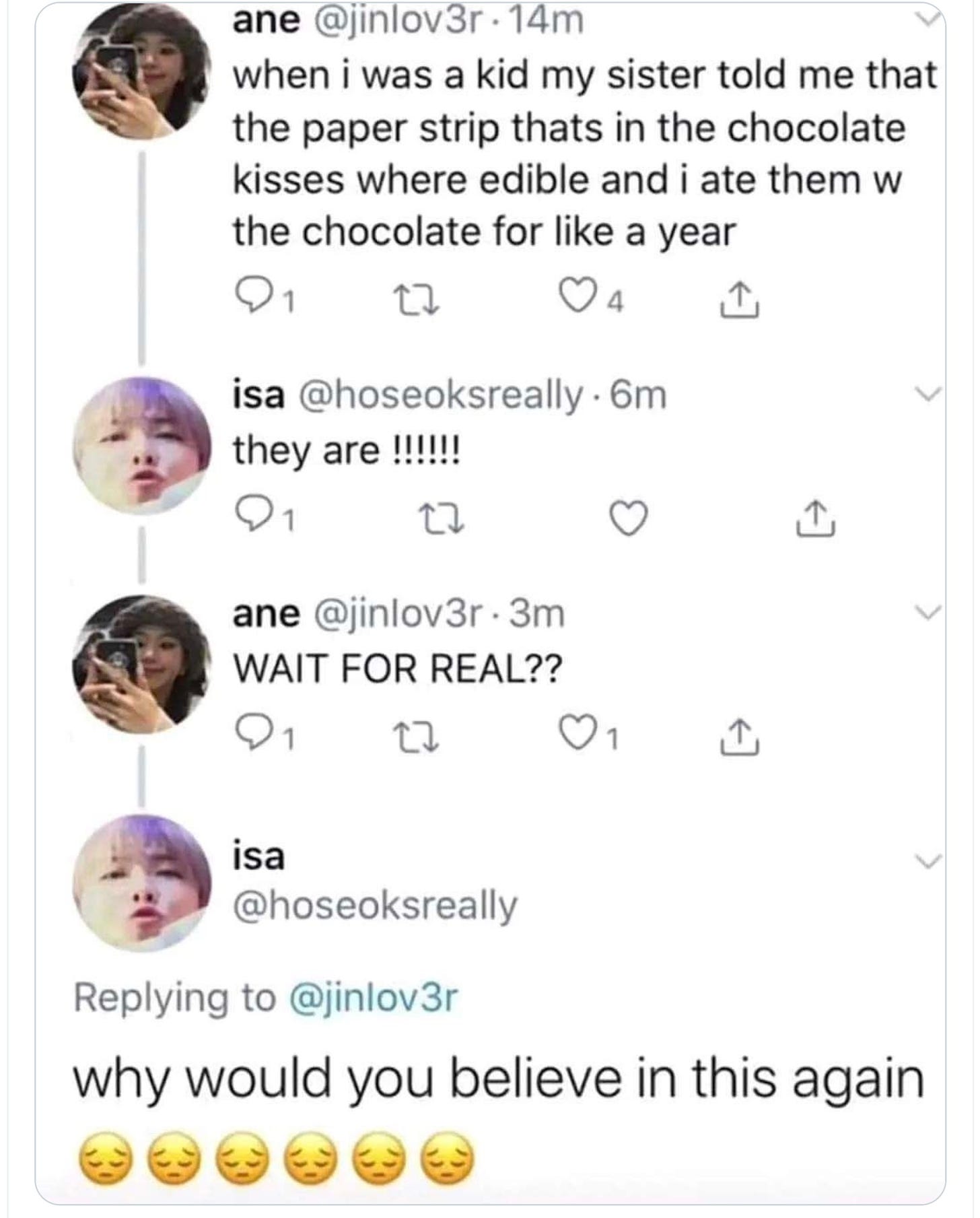No fare! On making public transportation free to ride
& reader feedback on political endorsements
To read this issue in your browser, click on the headline above.
Eric Zorn is a former opinion columnist for the Chicago Tribune. Find a longer bio and contact information here. This issue exceeds in size the maximum length for a standard email. To read the entire issue in your browser, click on the headline link above.
Free rides for everyone?
A recent Tribune article on progressive mayoral hopefuls noted as an aside that activist Ja’Mal Green “argued the CTA should be free.”
I wrote in favor of this seemingly radical idea 15 years ago and suggested we throw the fareboxes, turnstiles and card-machines into the landfill. Make every day New Year's Eve (when rides are free).
About half of the CTA's annual budget comes from fares, so lawmakers would have to raise taxes and fees significantly to cover the shortfall. But it might pay off.
Advantages of free public transportation:
It would make Chicago a more attractive city to visit and to operate a business.
Because of vastly increased ridership, there would be more buses and more trains running more often and along more routes, making the CTA a more efficient and attractive transportation option.
It would reduce traffic congestion and pollution.
It would reduce our consumption of fossil fuels.
It would allow the CTA to divert resources now spent on enforcing, collecting and accounting for fares into such areas as enforcing platform, bus and train safety.
It would be of the greatest advantage to those who are currently disadvantaged -- low-income workers who now pay fares and have lengthy commutes on public transportation.
Like education, police and fire protection, and access to roads, transportation is a basic essential of life that government should provide.
Disadvantages of free public transportation:
It would cause economic harm to taxi drivers, parking lot owners and the automotive and petroleum industries.
The cost would be significant ain't chump change.
Without increased security and some sorts of restrictions, it might turn the CTA into more of a mobile homeless shelter than it is now.
It isn't the way we've always done it!
In 2018, under the headline “Should the CTA be free? Why not? Making it easier for people to get to jobs, schools, and health care could save society a ton of money” John Greenfield reported in the Chicago Reader:
The seemingly utopian concept of free transit isn’t so foreign in Europe. Estonia’s capital city, Tallinn, population 450,000, was a pioneer in this area, rolling out free transit service for residents in 2013. City officials there say that the program is financially sustainable, since it has encouraged more people who live in the region to establish residency in the city. They say the resulting $25 million-plus gain in income tax has more than covered the $15 million in lost fare-box receipts, allowing the city to continually increase transit service to meet demand. …
Audrey Wennink, a director with the Metropolitan Planning Council, acknowledged that offering free transit for all Chicagoans would be an uphill battle. However… Wennink said that if there is political will in Illinois to address climate change and economic inequality—she noted that about 71.5 percent of CTA riders are people of color and 29 percent are low-income—it might be possible to overcome the financial barrier through creative revenue strategies.
For example, Wennink said, more of the state transportation budget could be shifted from roadways to transit, or tolls could be added to all the highways in the region to fund public transportation. Another idea would be to create a new tax on employers that would be earmarked for transit. About 42 percent of the $12.3 billion annual operating budget for the Paris regional transit authority comes from a tax on firms with ten or more employees.
Greenfield seemed far more inclined to support subsidized or free public transportation for low-income residents only.
That same year, Jeremy Glover of the Metropolitan Planning Council took a careful look at the free rides idea:
Chapel Hill, N.C., offers free fixed-route bus service. That system has an annual budget of about $20 million, an order of magnitude smaller than Chicago. It’s paid for by the surrounding municipalities, and very healthy contributions from the University of North Carolina. In Pittsburgh, free trips are provided between 6 adjacent light rail stations that take people from downtown to the city’s stadium district. This is funded through a partnership with the Steelers and the Rivers Casino, but it has a very limited geographic scope and bus service is not included. Kansas City has a single free street car line that runs just 2 miles through downtown. Salt Lake City has a free fare zone in its downtown, but any rides originating or ending outside of the zone require payment. These are fairly typical examples of the limited free transit options in the US. Needless to say, a free CTA would be the most ambitious project of its type in the Western Hemisphere, and probably the world. …
There’s also an obvious equity argument (in favor of the idea. Approximately 71.5% of CTA ridership qualifies as minority, and 29% qualifies as low-income. Eliminating fares would be a powerful tool to improve mobility and access to opportunity for these populations.
In 2020 Ellen Barry of The New York Times wrote “Should Public Transit Be Free? More Cities Say, Why Not?”
A handful of experiments in the United States in recent decades, including the cities of Denver and Austin, were viewed as unsuccessful because there was little evidence that they removed cars from the road; new riders tended to be poor people who did not own cars.
And earlier this year, Wired contributing editor Nicole Kobie made “The Case for Making Public Transit Free Everywhere — From Spain to Germany and Luxembourg to Estonia, more and more countries are experimenting with fare-free transportation.”
Kobie’s case contains a number of caveats and is not by any means resounding. But she concludes:
Setting aside figures about costs and statistics about ridership, there’s another way to look at it: Public transport should be considered a human right, alongside access to health and education. It’s necessary to life in a city, says [Jenny Mcarthur, urban infrastructure researcher at University College London] “Public transport is an extremely efficient way to get people around,” she says. “Buses and trains are not only efficient for people who use them, but also people who don’t.”
Transportation as a human right? I don’t know that I’d go that far, but the idea that subsidizing a free network of urban trains and buses would be a sound investment in the future of the region seems worth considering.
Notes and comments from readers —lightly edited —- along with my responses
Some of these messages are in reference to items in last week’s issues of the Picayune Sentinel.
Regarding Endorsements
Jake H. — I like traditional endorsement editorials. I like their pith, scope, and tone. I like that they're reliable. I'll miss them when they're gone. I think they add something to the discussion.
The real reason that Alden Global Capital, which owns the Tribune and some 200 other papers, is stopping endorsements in major races is that they piss off readers. I see the point. I'm not sure that's a great reason though.
I like the idea of an institutional voice that assesses issues through the lens of a particular set of values, at least on the opinion pages.
I like that there are a variety of publications that can be relied upon to advance the most responsible versions of their respective camps' positions.
If we got rid of the institutional voice concept, I'd be okay with editorial-style columns under bylines. You could even do point/counterpoint. But I doubt that will happen. Because those will piss off readers too. Making an argument on something controversial is offensive.
I fear we'll end up with barely any reputable outlets publishing any columns straightforwardly arguing for how citizens should exercise their most fundamental right and duty. So people won't be told what to think -- by reputable outlets, that is, only by online morons.
I think point/counterpoint editorials are very useful and I think they are less likely to anger readers than a pronouncement from atop the publication’s high horse on one side or the other.
Pam C. — I take the Tribune's endorsement page into the voting booth with me, not for the major candidates but for the Metropolitan Water Reclamation District candidates, judges and others down the ballot about whom I have no clue and neither the time nor inclination to research. I assume the Tribune has done the homework and I like to think that at least I am not voting blind on those positions. I would encourage them to keep doing it for local positions! It's one of the things I value about the Trib.
That’s a fair point and one I heard a lot. People want guidance in downballot races. And they trust newspapers to sound the alarm when wackos and nutjobs and incompetents seek office. I get that.
VoteForJudges.org is a useful site that aggregates the various bar association recommendations. The Girl I Guess Progressive Voters Guide might help you vote. Same with Injustice Watch. It’s very hard in such cases not to farm your decision out to some third parties, which makes the whole idea of voting for judges somewhat peculiar.
Dennis M. — I question the validity of the Pew Center Research study you cited that says 70% of people said they weren’t influenced by newspaper endorsements. I would guess a similar study would find that people don't feel that commercials or ads influence their decision to buy Fruit Loops or Geico insurance, but clearly we know that's not true. And as you said, the Sun-Times endorsement of Lightfoot in early 2019 sure seems like evidence that endorsements can influence an election. It may also be an addition to the argument that they should end.
That’s a good point. Do we really want these unaccountable, unelected panels of people whose deliberative processes are opaque to have extra sway?
Georgia G. — I am of the more extreme opinion that there should be no unsigned editorials at all in a newspaper. It just doesn’t seem worth the respectability tradeoff in today’s political climate. I do think there’s immense value in providing guidance (again, not endorsements, per se) on campaigns, particularly in the more local races.
That’s the obvious logical conclusion you reach when you start doubting the tradition of a newspaper having an institutional voice that has values above and beyond merely the values of conducting sound, balanced journalism. The answer to “Says who?” in regard to the content of many editorials, not just endorsements, is “a tiny group of well informed people” or even “one person with a lot of money.” Which is fine, but it’s downright weird to imply that they speak with the authority of a publication that gains what authority it has through objective reporting and editing.
There is an interesting dissent at Poynter: “Alden’s move to end candidate endorsements feels like cowardice.” I continue to invite dissenting views. My plan to publish some on Thursday is hampered right now because no one has submitted anything particularly strong.
Regarding the gubernatorial debate
David A. — It’s fascinating to me that you wrote that you will “vote … without reservation” for the candidate for governor you yourself describe as “robotic,” “humorless,” and exhibiting “mealy-mouthed cowardice.” Of course you’ll say that you still prefer Pritzker to Bailey, but then Pritzker and his Democratic friends are largely responsible for Bailey being the Republican nominee, aren’t they, having spent so much money and energy to interfere in the Republican primary and make sure that Aurora Mayor Richard Irwin didn’t win it? This and your reasoning are yet more sad examples of why Illinois remains among the most Democratic but least democratic (with a small “d”) states in the union.
First, I said JB’s answer to a silly question was “robotic” and “humorless,” not that he himself is defined by those traits. Though of course nearly every politician is robotic in his responses and precious few have good senses of humor. I would not say that Pritzker’s investment in the Republican primary was decisive. Bailey won with 57.2% of the vote. Jesse Sullivan was in second place with just 15.8%. Richard Irvin was third.
Basically, what Pritzker did in those commercials was to stress how conservative Bailey is. That’s what Republican primary voters wanted, as it turned out. There’s your small-d democracy right there. And, for the record, Illinois is not the most Gerrymandered state. Not even close. See here and here.
Finally, how could I have any reservations about casting a vote for Pritzker when the only realistic alternative is Bailey, who is an unreflective populist boob?
Jim S. — A big problem with most political debates is the moderators. Journalists know a lot about an amazing range of issues, but they aren't experts. In addition, they need to appear fair-minded. That’s admirable, but it limits their willingness to be as tough as they need to be. So, out of lack of knowledge or out of an attempt to appear even-handed, journalists lead debates that are worthless. Instead, for moderators we should try non-journalists: business owners, nonprofit leaders, college professors, hard-nosed high school teachers, etc.
This seems to be the inspiration for the “let an everyday person ask the question” segment in many of these stylized debates. And while it’s not a bad idea, the citizen questioners don’t get a follow-up (they are usually pre-recorded) and it’s in the follow ups that the pols can begin to sweat and reveal themselves.
I ask again, though: Do we need moderators at all? Why not just let the candidates have at one another, ask each other questions and let the audience make their judgments accordingly?
Regarding the hijab
No letter writers responded to my follow-up Thursday on the symbolism of the hijab in light of the protests in Iran, but Sun-Times columnist Rummana Hussein published what could stand as a counterpoint in Protests in Iran are a reminder: Stop policing what women want — or don’t want — to wear:
Bigots are using the situation in Iran to drum up more ways to make life harder for Muslims within their own borders.
In France, female artists and actors, including Juliette Binoche and Marion Cotillard, gave a nod to dissenting Iranians by snipping off some of their hair. Wonderful. Much appreciated. But that compassion was lacking when the French government, in the name of secularism, implemented its own laws aimed at controlling how people of faith — particularly Muslim women — dress in certain spaces.
“Denying women the right to wear a hijab is just as patriarchal and authoritarian as making them wear one,” noted Catherine Z. Sameh, an associate professor of gender and sexuality studies at the University of California at Irvine. …
Choice is ultimately at the heart of the current movement in Iran, where most but not everyone is Muslim.
That gesture should sound familiar to many American women who have peers who’d never want to undergo an abortion but have been showing up at pro-choice rallies because they believe only women — not the government, nor a religious institution or a man — should make decisions about their bodies.
I hope these nuances are kept in mind when others encounter Muslim women, with or without hijab, while efforts to police our clothing continue overseas.
Ya gotta see these tweets!
I often run across tweets that rely on visual humor and so can’t be included in the Tweet of the Week contest (the template for the poll does not allow the use of images). Here are a few good ones I’ve come across recently:
Vote for your favorite. I’ll share the winner in Thursday’s main edition.
Meanwhile, enjoy Keith and Mick just enjoying singing together:
There’s still time to vote in the conventional Tweet of the Week poll!
Thank you for supporting the Picayune Sentinel. To help this publication grow, please consider spreading the word to friends, family, associates, neighbors and agreeable strangers.
.




















"Free" stuff always sounds good. A proponent of making CTA transportation free frames transportation as a "human right". So now transportation is added to the list of healthcare, food, housing, heating fuel, education, access to and equipment for Wi-Fi, as things which should be regarded as a human right.
As more and more things become "free", how long until increasing numbers of people are going to tire of working to pay taxes to provide "free" stuff to others, and simply join those on the receiving end of all the "free" stuff?
Sure, free CTA. The last normal fare year, 2019, had about $655 million in fares. Replacing that would be a 38% property tax increase. Lightfoot chickened out on a 2.5% increase. And then Eric also suggests that service will be expanded. Assuming that is busses and trains then there is also another increase to cover new capital costs and another increase for the operations. Cue the fairy stories about how someone else will pay. Or maybe adding a city income tax, like Tallin, is what we need. No downside to a city income tax, right? And of course, we can revive the toll-streets idea. Or new taxes on business, that wouldn't blunt any of the purported improvements in business climate? And let's not forget that the city still has not covered the pension costs and the CPS will also be coming back for annual increases. And since it is such a benefit, shouldn't we give non-CTA people the same benefit and offer free bikes or scooters? Both really need to be offered to people for the trip to the CTA station. This also removes the only discipline on routes. No route will ever be reduced or eliminated, regardless of ridership.
I am also skeptical about the 'vast increase in ridership' but if it happened it would require vast improvements in operations, but it would not magically 'make' the CTA more efficient or attractive. But the reason that I am skeptical is because the fares are already laughably low compared to all other transportation alternatives. The only new ridership would be people that can't afford the current fares because anyone that can afford them will not be enticed by such a small increase in price differential. The current $2.50 CTA fare is equal to the lowest one-hour parking meter rate. Daily parking in a garage downtown is $30 to $50. The minimum Uber charge is $5, which would take you about three miles. Price is not the barrier to ridership.